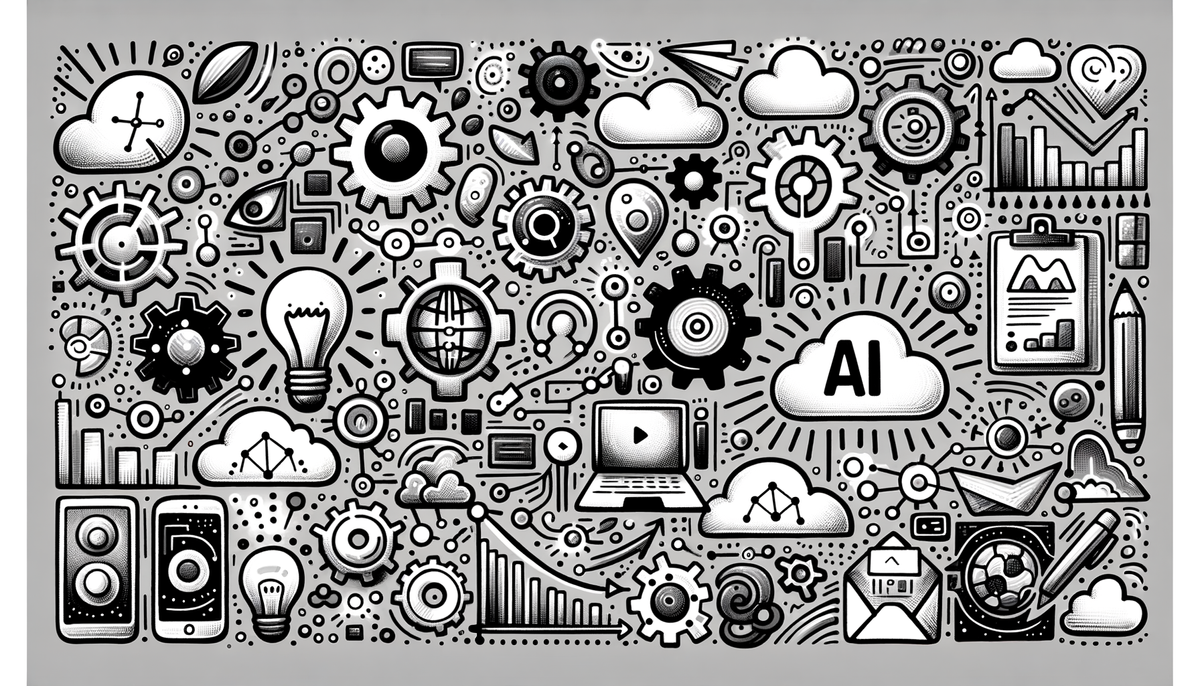Technology Updates: Cybersecurity, AI Legislation, and Innovations

On a brisk morning, an insightful breakthrough in data analytics and AI innovation unraveled, sparking a cascade of transformations across business, ethics, cybersecurity, gaming, and enterprise Linux support. This juxtaposition of technical prowess and regulatory imperatives illustrates the dynamic interplay crafting our future.
Revolutionizing Data Foundations: AWS Pi Day 2025
AWS Pi Day 2025 is not merely a commemorative event—it is a showcase of the latest cloud innovations that connect data management with powerful AI capabilities. The event put a spotlight on a unified data foundation that streamlines analytics and AI initiatives, and at the heart of these developments is the freshly enhanced Amazon SageMaker. With its new SageMaker Unified Studio, teams of data scientists, developers, and analysts now collaborate in a single workspace, breaking down long-standing silos in data handling.
One of the most impressive innovations announced was SageMaker Lakehouse, a solution that effortlessly unifies data across varied sources. This is complemented by Amazon S3 Tables, which have been optimized for analytics to offer significantly boosted query performance and faster transactional speeds. Such enhancements make it increasingly simple to manage large datasets, even for organizations with heavy workloads. The leap in capabilities not only accelerates data-driven decisions but also bolsters the methodologies underpinning modern AI applications.
For technology enthusiasts and professionals looking to stay ahead in the AI and analytics space, these developments open up avenues to build dynamic data lakes and cutting-edge AI applications. As technology pundits often observe, “Innovation is the ability to see change as an opportunity, not a threat.” This sentiment resonates well with AWS’s forward-thinking approach.
Practical Implications of AI Agents in Business
The conversation around AI is incomplete without discussing the emerging popularity of AI agents. While the Forbes article “What Is An AI Agent? 5 Practical Ways To Use Them In Your Business” delves into a variety of applications, it’s clear that businesses are only starting to tap into the potential of these smart assistants. AI agents are increasingly deployed to streamline customer support, personalize marketing, and optimize logistics operations, among other tasks.
In practice, an AI agent can monitor complex supply chains, manage inventory levels, and even interpret customer feedback in real time. This type of technological augmentation doesn’t just reduce manual intervention—it can provide nuanced insights by analyzing vast datasets at unprecedented speeds. By complementing human ingenuity, these agents help companies make quick decisions in volatile markets.
An interesting perspective comes from noted AI researcher Fei-Fei Li, who once remarked,
“I often tell my students not to be misled by the name 'artificial intelligence'—there is nothing artificial about it. AI is made by humans, intended to behave by humans, and, ultimately, to impact humans' lives and human society.”
It is this pragmatic approach that encourages businesses to see AI agents not just as automated replacements, but as powerful tools that can augment a workforce.
Regulatory Oversight in AI: Virginia’s Legislative Initiative
Amid the flurry of innovation, regulatory bodies are ensuring that AI remains under a human guiding hand. In Virginia, legislation is poised to mandate human oversight over AI use in court decisions, marking a landmark shift in how justice is administered. Lawmakers argue that while AI can streamline decision-making, the nuances of the legal process require human empathy and accountability.
This move is a response to growing concerns about over-reliance on technology in critical decision-making areas. The underlying notion is that even the most advanced algorithms require transparent parameters and oversight to maintain fairness. It's a timely reminder that technological progress should always be tempered by ethical considerations, which we have explored in depth in our discussion on innovations, ethical dilemmas, and transformational impact in AI.
By bridging technology and human judgment, Virginia’s initiative suggests a future where policies ensure AI enhances justice rather than replaces human discernment. In doing so, it aims to inspire balanced progress—a theme that echoes across multiple sectors where AI is applied.
Navigating New Horizons: Nvidia’s AI Pivot
Nvidia, a name synonymous with graphic processing excellence, has become a fascinating study in evolution. As outlined in Bloomberg's feature “Nvidia Looks Past DeepSeek and Tariffs for AI’s Next Chapter,” the company is strategically shifting its focus to unlock new AI applications that could redefine computing. Even as external factors such as unexpected disruptions by competitors like DeepSeek and fluctuating trade tariffs continue to create challenges, Nvidia’s clear focus remains on future-proofing its technological roadmap.
The tech giant is famously known for catalyzing waves of innovation, and its bold moves hint at an era where AI applications may soon permeate every aspect of our digital experience. Imagine cloud gaming environments, enhanced virtual reality experiences, and more intuitive computer graphics—all benefitting from Nvidia's relentless pursuit of AI excellence. As competitors scramble to catch up, Nvidia’s roadmap serves as a masterclass in balancing commercial imperatives with technological foresight.
This forward-thinking approach not only cements Nvidia’s reputation within the tech landscape but also provides a glimpse into how companies can thrive amid technological and economic uncertainties. It is a testament to the fact that in today's competitive world, integrating AI isn’t just an advantage—it’s a necessity.
Cybersecurity in the AI Era: Lessons from Volt Typhoon
While the innovations in AI and data management are extremely promising, they also coexist with an intricate and often perilous cybersecurity landscape. A recent investigation by TechRadar highlighted how the Volt Typhoon threat group—a Chinese cyber activity—had managed to infiltrate parts of a critical American utility network for nearly a year. This alarming breach, which targeted the operational technology of a utility network in Massachusetts, underscores a growing vulnerability in the cyber defenses that support critical national infrastructure.
In an environment where long-lived OT devices are considered inherently secure, the evolving sophistication of digital attacks reveals a significant blind spot. Notably, cybersecurity firm Dragos was able to identify and contain the incursion, thus preventing any significant data compromise. The incident is a stark reminder that the introduction of artificial intelligence into cyber warfare multiplies both the potential and complexity of threats.
Experts advocate for a proactive approach that shifts from mere reactive defense to anticipating and preventing cyber intrusions before they take root. This aligns with broader discussions on the challenges of balancing innovation with security—a delicate balance also evident in comprehensive reports like those on ethics, security, and innovations in AI.
Incorporating continuous monitoring and automated threat response mechanisms powered by AI could be an effective way forward. However, as with AI in decision-making systems, human oversight remains crucial to ensure that these advances do not inadvertently create new vulnerabilities.
Gaming Modes: Fullscreen Versus Borderless
The gaming world has always been a fertile ground for technological debates, and the recent discussion on fullscreen versus borderless window modes is no exception. A PCWorld article titled “Fullscreen vs. borderless? Why I stopped tripping on the gaming mode question” offers a nuanced look at this debate. Fullscreen mode is cherished for its promise of optimal performance by dedicating maximum system resources solely to the game environment, creating an immersive experience.
On the other hand, borderless mode shines when multitasking is the priority. It allows seamless transitions between game play and other applications, making it ideal for competitive gamers who also need to manage live chats or access guides during gameplay sessions. Practical tests have shown that while performance differences are minimal—sometimes as little as a 0.4 fps gap—the decision is largely determined by the user’s usual tasks and device configuration.
This discussion does more than just divide opinions; it humanizes the technological debate, showing that at the end of the day, preferences come down to individual needs and lifestyles. As gaming continues to evolve with integrated AI technologies enhancing game mechanics and user interaction, these choices might become even more personalized.
SUSE’s Strategic Commitment to AI and Multi-Linux Support
In a bid to reaffirm its place in the modern tech landscape, SUSE is doubling down on its commitment to both AI and multi-Linux support, as reported by The Register in their coverage of SUSECON25. With over three decades in the industry, SUSE is quickly shedding any perceptions of obsolescence, launching initiatives that integrate AI across their product lineup while simultaneously simplifying Linux management in mixed environments.
SUSE’s announcement of Service Pack 7 for SLES 15—with support extended until 2037—and the burgeoning rollout of SLES 16 underscores its dedication to long-term relevance. By introducing robust Multi-Linux Support that spans popular distributions like CentOS and RHEL, SUSE is equipping enterprises with the tools they need to manage increasingly complex IT landscapes. Enhanced security features, such as Role-Based Access Control in the new Multi-Linux Manager, further emphasize the company's focus on effective threat mitigation and streamlined administration.
Interestingly, SUSE also unveiled support for Amazon Linux 2023, along with a tech preview of Raspberry Pi OS. The integration of SUSE Security with Microsoft Sentinel marks another forward step in thwarting emerging cyber threats—an ever-important consideration in our increasingly digital world. For many in the tech community, these innovations represent more than just incremental updates; they symbolize a commitment to continually adapt to the rapidly evolving confluence of AI and IT infrastructure.
In a world that thrives on constant innovation, each breakthrough—whether it’s in data analytics, AI agent utility, regulatory frameworks, graphics processing, cybersecurity, gaming, or Linux support—reminds us to value both technological ingenuity and prudent oversight. Read further on related topics through our transformational impact series, explore security and ethical debates in AI, or dive into cloud innovations on our cloud security insights page. As we stand on this frontier, it is clear that the dialogue between human oversight and machine efficiency will continue to shape and redefine every aspect of our digital lives.




